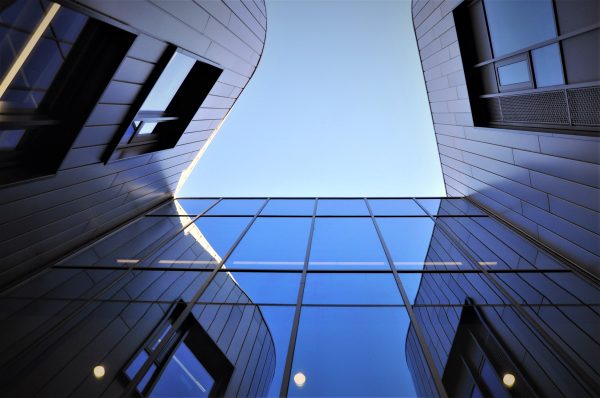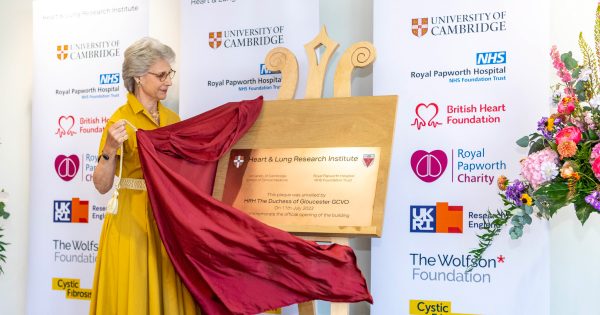Pioneering Spaces for the Future of Life Sciences

At Fairhursts, we’re proud to design spaces that drive innovation across the UK’s most dynamic sectors. The life sciences industry is a unique force within the landscape of UK innovation, contributing the research, development, and manufacturing of products that have the power to completely change lives. Some of the world’s biggest life science breakthroughs have happened in labs around the UK—from discovering the lifesaving properties of Penicillin, to uncovering the structure of DNA.
Where invention marks the initial spark of an idea, innovation is the lifecycle that spans discovery to the production of a tangible product or solution. While we can’t architecturally design the next major scientific breakthrough, decades of collaboration with people who are making these advancements have taught us how to create environments in which these ground-breaking discoveries can turn into lifechanging treatments.

Designing for Multidisciplinary and Collaborative Innovation
Life science is a multifaceted endeavor, and though history loves to pick and choose heroes, innovation very rarely occurs with input from only one person, or even one team. Take the discovery of Penicillin, for example. Alexander Flemming is famously accredited with the accidental discovery of this special mold, but it took multiple interdisciplinary teams to refine it’s properties and manufacture an effective product that would end up saving the lives of hundreds of millions around the world.
True modern innovation in life science extends beyond the stereotypical image of scientists huddled around a test tube. Even companies like Bose, primarily known for commercial audio equipment, have partnered with scientists to apply their sound proofing technology to treatment for tinnitus, or Apple, which contribute major innovations in the development of wearable medical devices. It’s this recognition of the truly multidisciplinary nature of science that is crucial to designing exciting and effective buildings, campuses, and clusters.
Facilities must surpass traditional setups in order to foster a culture of collaboration and knowledge exchange not only between intradisciplinary groups, but also between related and seemingly unrelated sectors. Rather than focusing solely on laboratory-based bench work, buildings and campuses should cater for a wide variety of science applications by providing spaces beyond the lab where people can come together to meet, share ideas, and form important partnerships


Case Study: The Materials Innovation Factory
The Materials Innovation Factory, developed as a joint venture between The University of Liverpool and Unilever, was designed with the central mission of bringing together research and industry groups to accelerate material innovation and product development, and address real-world challenges.
The design of the facility was crucial to effectively creating a space where people from these two worlds can come together to innovate. Through strategic design, wet labs supporting advanced research are carefully interwoven with collaboration areas, strategic interaction-points, and dedicated office space to house industry professionals and academic leaders side by side.
Now home to over 200 researchers, including some of the worlds most decorated materials scientists and chemists, this building stands as an innovation launchpad in the heart of Liverpool’s Knowledge Quarter. As a result of this building effectively uniting academic research and industry research teams, Unilever estimates their rate of patenting to be more than twice their average, accelerating innovation in the materials industry.


Flexibility and Adaptability Unlocks Potential
Creating opportunities for multidisciplinary collaboration requires careful planning and strategic design, but these efforts to create a dynamic space can often fall flat if the facility does not also possess the ability to adapt to a shift focus or realignment of priorities. Flexibility and adaptability are therefore essential features of a modern life science facility, to ensure spaces can evolve to support new opportunities for innovation.
This flexibility can take many forms—on a smaller scale, modular setups enable rooms or labs to be reconfigured daily as workflows change. On a larger scale, flexible servicing and adaptive infrastructure can allow entire floors to be reconfigured to support entirely new types of work.
As technology advances at a lightning pace, a “loose-fit” approach to space planning and infrastructure is also crucial to allow seamless integration of new equipment, robotics, or advanced AI, helping organizations remain at the forefront of their industries.

Sustainability in Longevity
Adaptability in infrastructure not only drives scientific advancement but also plays a critical role in reducing a building’s carbon footprint over its lifetime. By designing spaces that can evolve rather than requiring constant refurbishment—or worse, demolition—we can eliminate the significant climate impacts associated with these processes.
In commercial science buildings, it’s crucial to prioritize the legacy value of fit-outs and their capacity for adaptation. As life science companies undergo growth cycles and shifting needs, flexible design ensures that spaces remain functional across a wide range of uses. Striking a balance between bespoke solutions and long-term sustainability allows buildings to serve second- and third-generation purposes without unnecessary waste or resource-intensive overhauls.
Now more than ever, it’s time to design buildings that are built to last—structures capable of standing the test of time while meeting the evolving demands of innovation and supporting the development of a healthier planet.

Sustainability in Operation
While designing new buildings which take a sustainable approach to design and construction is extremely important, in reality, the operational impact of science buildings can have a more significant and detrimental impact on the environment. Maximizing a buildings operational efficiency is therefore crucial, as is communicating this importance to the building’s occupants.
There is a lot design can do to minimize climate impact on the technical front, but it is also important to create a culture of environmental sensitivity. By visually representing climate consciousness in designs, we believe we can drive the creation more efficient and environmentally conscious research environments. And if brilliant innovations can come from ecologically responsible labs in the UK, this sets a strong example and standard to follow for the rest of the world.


Forging a People-Centric Future in Life Sciences
Science buildings are very technical with complex functional requirements, however, it is important to remember that they are still for people. Whilst we strive to create environments for efficiency and precision, we also need to recognize that enjoyment and a sense of place and worth are all key ingredients to allowing innovation to flourish.
We must take care of the people who are working hard to take care of the global population. There is no fool-proof manual for ‘creating the perfect workplace’, but we do know that it’s important to make buildings just as comfortable as they are cutting-edge, as pleasant as they are productive, and as inviting as they are innovative.
Achieving this balance requires a deep understanding of life sciences and the day-to-day activities of R&D professionals, combined with design expertise. As a practice, we have decades of experience crafting spaces that empower brilliant minds and ground-breaking ideas, and as a team, our passion lies in creating environments where culture and functionality coexist to inspire greatness.

The future of life sciences depends not only on ground-breaking research but on the environments where that research takes shape. Buildings are more than mere enclosures for scientific activity—they are the foundation for collaboration, innovation, and cultural transformation. They provide the spaces where people come together to think, create, and challenge the boundaries of possibility.
At Fairhurst Architects, we believe the spaces we design today will shape the innovations of tomorrow. By prioritizing adaptability, sustainability, and a people-centered approach, we create environments that not only support the technical needs of cutting-edge science but also foster a sense of belonging, creativity, and shared purpose.
The life sciences industry stands as a beacon of progress, tackling some of the most pressing challenges of our time. As architects, our role is to provide this industry with settings where breakthroughs are made, where knowledge flows freely, and where culture thrives.

